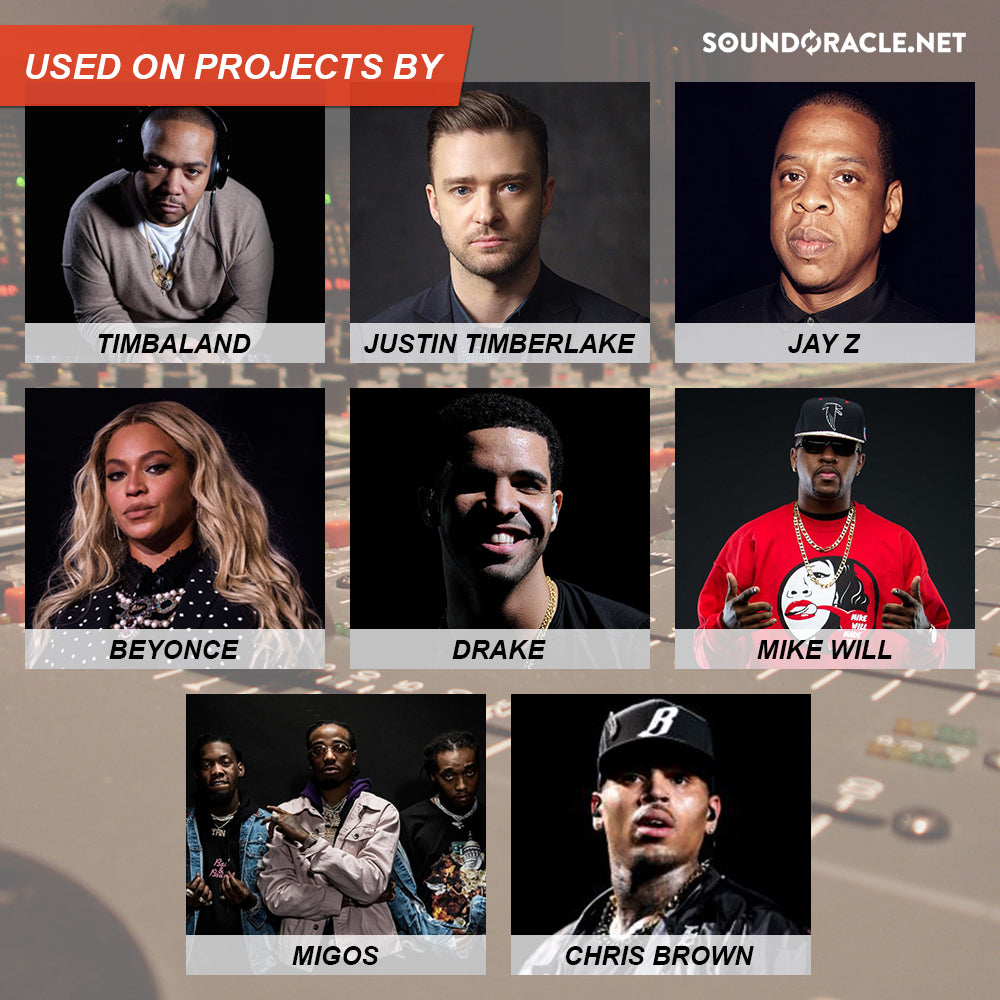How To Tune Your Drum Samples!

HOW TO TUNE YOUR DRUM SAMPLES!
Written By: Eric “Realistic” Michael
“How To Tune Your Drums Like A Pro”
As producers & beat makers we know how important drums are for the driving force of a track. A dope drum pattern with awesome sounds is something you’re probably really good at, but after you come up with a great pattern for your beat, there’s one more step you can take to bring your drums to the next level - you can tune them to the key of your song. This is a technique that a lot of pros use & it’s one of the things that really can separate how professional a beat sounds. Luckily, it’s actually really easy to do & you can do it with stock & free plugins.
There’s a few different ways to do this technique, but we feel the most confident with one of the ways. One way is to use a guitar tuning plugin; however, sometimes the tuner has a hard time catching the quick transients of drums, lack of harmonics in snares & hi hats, & low end information of kick drums. Another way is to run your drums through a pitch correction software, but this technique can warp the sound & create artifacts. The way we recommend is to use the “tuning knob” on your drum sequencing plugin & using a spectrum analyzer to find out what the notes are. This will all make sense in a moment!
Most drum sequencers should have a tuning knob. Maschine, Battery, ReDrum, Kong, Ultrabeat, Drum Rack, FL Sequencer, & Kontakt all have this option built in to their interfaces.
Tools needed:
- Drum sample
- Drum sequencer with tuning knob
- Spectrum analyzer
There are a few different spectrum analyzers you can use; however, we suggest using the free plugin SPAN. You can download that here!
We recommend this plugin because it allows you to run audio through it & “freeze” the screen so the frequency shape stays on the screen even after you stopped running audio through it. It also tells you what the pitch is of a specific frequency area; that is the key to this technique. After all, pitches are just frequencies. The other reason we recommend it is because it’s free!
Let’s begin!
Step 1: Play your sample & freeze the spectrum analyzer.

It helps to have your drum pad or keyboard next you to so you can trigger the sample. Simply trigger the sample & press “hold” on your SPAN EQ. This will now freeze the frequency shape on your screen.
Step 2: Figure out what the fundamental frequency is.

Figuring out what the fundamental frequency is a fairly easy process. It’s the highest & roundest peak your drum sample is creating inside of the spectrum analyzer. Pictured above is a kick drum. When you hover over the fundamental area, the note value of that frequency will appear on top of the plugin screen. In this case, the sample is currently a “C natural”. If your song is in the key of CMaj, Cmin, or one of the important notes of the scale is a C natural, then there is nothing left to do.
For the sake of learning the process, we will say the key of our song is “B Min”, so we will need to tune this sample to a different note. Usually the go to pitches to tune to are the root, the 3rd, or the 5th of the scale. You can tune up or down to get to the note you need & it’s best practice to tune to the closet note. This will avoid things sounding stretched out, warped, sounding too “woofy”, or sounding too “pingy”.
Since this sample is currently a “C natural”, a “B natural” will make the most sense for tuning to the key of Bmin. We’re only a half-step away!
Step 3: Tune your sample to the new note.
Locate your “tuning knob” on your drum sequencer. It may be called tune, detune, tone, or pitch.

Next you will want to turn this knob either up or down to the note you want it to be at. For the example we are using - tuning to a B natural - we will want to tune down one note.

Step 4: Check your sample in the spectrum analyzer.
Now that we have tuned the drum sample down, we will want to just double check to make sure that the fundamental frequency is a “B natural”. Just like before, we will want to open the SPAN plugin & hover over the highest & roundest part of the frequency shape.

There may be cases where you need to adjust the tuning knob one more time, but that’s the whole process! Just repeat these steps for your snares, claps, hi hats, cymbals, & percs! Once all your drums are tuned to the key of your song, you will notice how everything sounds more cohesive & the whole track gels together much better!
Producers have eagerly been awaiting this groundbreaking video course & it's finally available to access.Giving your beats a professional mix is a standard that's expected from major labels & publishing companies when trying to get your beats placed.Our brand new coursework will teach you everything you need to know to ensure your beats have an outstanding mix & loud clean master.Save thousands of dollars by not having to enroll in school & save hundreds of hours from watching the wrong the tutorials.
What's included?
* Over 5 hours of expert techniques
* Mixing cheat sheets in PDF form
* An easy to understand, concise layout
* Small, digestible chapters with quick access to the info you need
* Everything you need to know to mix your beats professionally
Our 808 Formula series is one of our most popular & the much demanded third installment is finally
here!
808 Formula 3 is a mega library of high quality 808s & you'll be sure to find the 808 that you need
for any production style or genre.
Whether you need 808s that are hard hitting, punchy, distorted, classic, unique, wide, long, short,
or just a deep sub, 808 Formula 3 has every kind of 808 you can imagine!
This 808 kit will fit your workflow perfectly & works with all types of modern production types: Trap,
Boom Bap, Hip Hip, Pop, R&B, EDM, etc.
JOIN MY UNQUANTIZED PODCAST COMMUNITY
Don't miss ouT Unquantized Podcast LIVe & Interactive by @soundoracle + @triza starting at 4 pm every Friday @IG !!!
YouTube `
Instagram
ERIC MICHAEL
REALISTIC PRODUCTIONS
(Engineer)
Realistic is a Music Producer and Engineer located in the Twin Cities. He has been producing music for Hip-Hop & Pop music since 2004. In 2017 he graduated with an AAS in Music Production & Engineering. Real is the chief mixing engineer for SoundOracle.net where mixes all loops & sounds on the site & also provides mixing & mastering services on the site to artists & producers.





